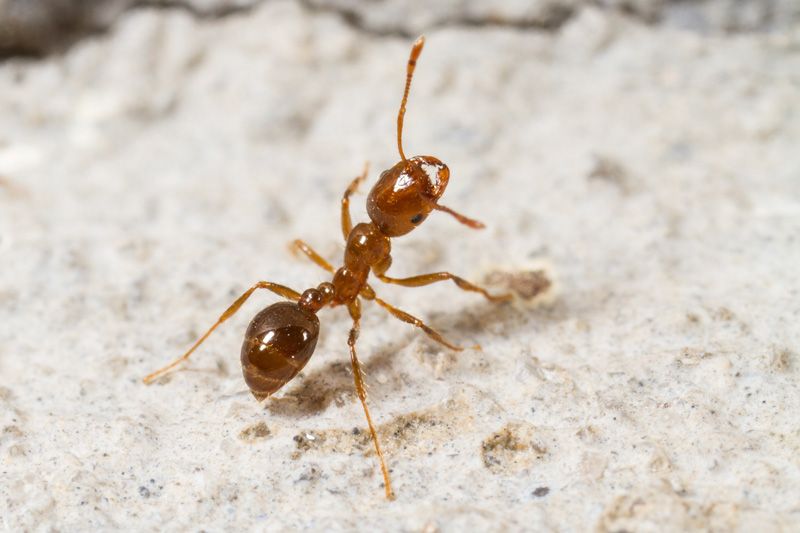
Red Imported Fire Ant – Solenopsis invicta
Red Imported Fire Ant – Solenopsis invicta
Description of Insect:
The Red Imported Fire Ant (Solenopsis invicta), often referred to as RIFA, is a highly aggressive and invasive ant species native to South America. Recognized for its painful sting and ability to establish massive colonies, this species has become a serious urban pest.
Red imported fire ants are reddish-brown with darker abdomens and range in size from 2.4 to 6 mm. Unlike many other ant species, their colonies contain workers of varying sizes, categorized as minor, median, and major workers. Their aggressive nature and highly organized colony structure allow them to outcompete native ant species and dominate new environments.
One of the defining characteristics of RIFA is its painful sting. When disturbed, these ants swarm aggressively, delivering venomous stings that cause burning pain, swelling, and the formation of pus-filled blisters. In some cases, individuals who are allergic to their venom can suffer severe reactions, including anaphylaxis.
Red imported fire ants are highly adaptable and thrive in various environments, including urban, agricultural, and natural settings. They build large, dome-shaped mounds in open areas such as lawns, pastures, and roadsides. These mounds house vast underground networks that allow the colony to survive harsh weather conditions.
Life cycle of Red Imported Fire Ant:
Red imported fire ants follow a complete metamorphosis consisting of four life stages: egg, larva, pupa, and adult. The queen lays up to 10-15 eggs within 24 hours of mating which hatch into larvae within 8-10 days. By this time, the queen will have laid 75-125 more eggs. The larval stage lasts approximately 6 to 12 days and consists of four instars. It is followed by the pupal stage, which takes about 9 to 16 days. It takes approximately 22-38 days to complete the lifecycle from egg to adult.
Colonies can consist of a single queen (monogyne colony) or multiple queens (polygyne colony), with the latter showing faster population expansion. Worker ants live for several weeks to months, while queens can survive for several years, continuously laying eggs to sustain the colony.
Damage they cause:
- Ecological Impact:Red imported fire ants significantly disrupt native ecosystems by preying on insects, dead mammals, earthworms, and even ground-nesting birds. Their aggressive foraging behavior reduces biodiversity, as they displace native species and other beneficial organisms. Additionally, their mound-building activities alter soil structure, affecting plant growth and water drainage in infested areas.
- Agricultural Damage:RIFA infestations pose a major threat to agriculture, particularly in crops such as corn, soybeans, citrus, and cotton. The ants damage plants by feeding on young growth and tunneling into roots. Their mounds also invade electrical equipment and irrigation systems, increasing the maintenance costs for farmers. According to an estimate, individuals spend almost $25-40 million yearly on chemical pesticides to control the infestation.
- Urban and Public Health Concerns:In urban areas, RIFA infestations create hazards in parks, playgrounds, and backyards, where their painful stings pose risks to people and pets. Their aggressive swarming response makes outdoor activities uncomfortable and sometimes dangerous.
